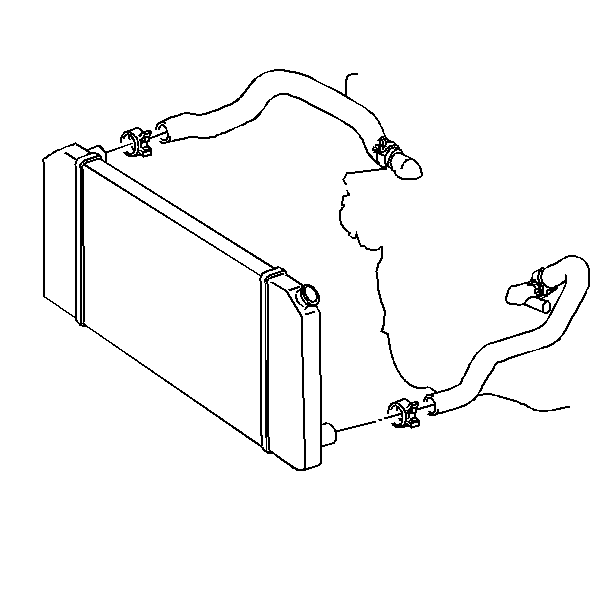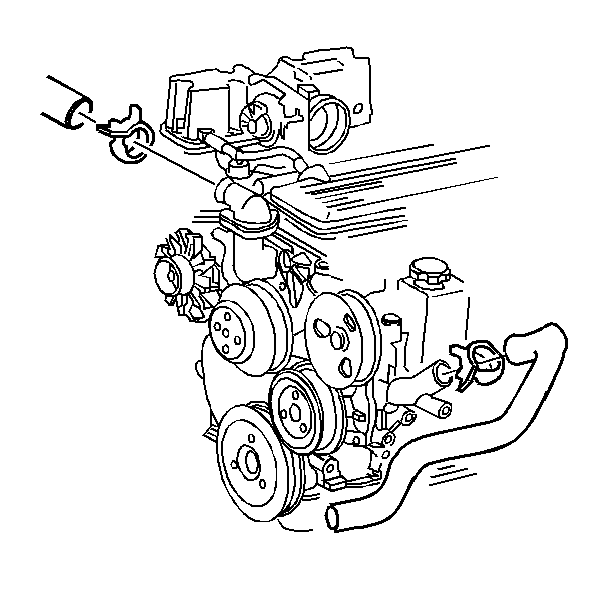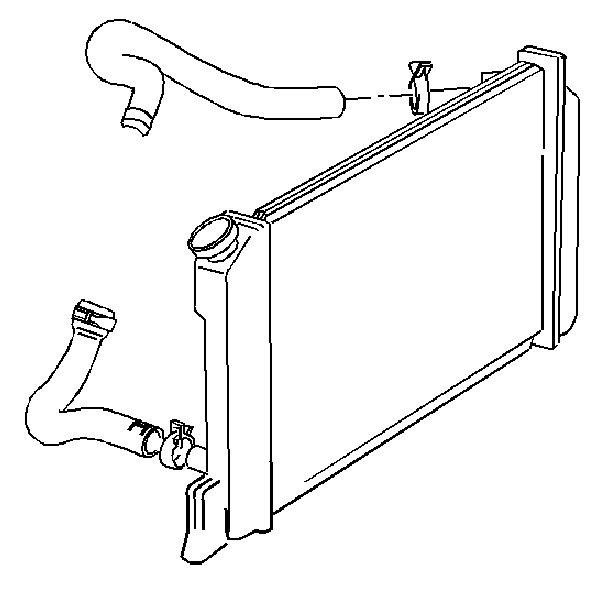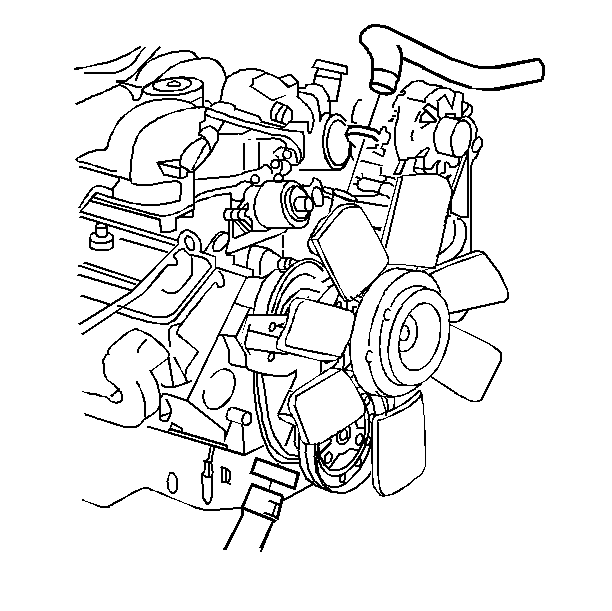Radiator Hose Replacement 2.2L
Removal Procedure
- Remove the coolant from the radiator so that the level is below the hoses being removed. Refer to Draining and Filling Cooling System .
- Loosen the radiator hose clamps.
- Disconnect the radiator hoses from the radiator.
- Disconnect the upper radiator inlet hose from the coolant outlet.
- Disconnect the lower radiator outlet hose from coolant pump.


Installation Procedure
- Place the radiator hose clamps loosely, on the ends of the hoses.
- Connect the radiator hoses to the radiator.
- Connect the radiator outlet hose to the coolant pump.
- If service type radiator hose clamps are used:
- Refill the cooling system to the proper level. Refer to Draining and Filling Cooling System .
- Check the cooling system for leaks. Refer to Radiator Leak Testing (On and Off Vehicle) .
Important: The 2.2L engine uses a spring-type (constant tensioner) clamp at the radiator hose connections. Install hoses on dry, unpainted surfaces in order to ensure proper sealing.


Connect the radiator inlet hose to the coolant outlet.
Tighten
Tighten the radiator hose clamps to 2.5 N·m (22 lb in).
Notice: Use the correct fastener in the correct location. Replacement fasteners must be the correct part number for that application. Fasteners requiring replacement or fasteners requiring the use of thread locking compound or sealant are identified in the service procedure. Do not use paints, lubricants, or corrosion inhibitors on fasteners or fastener joint surfaces unless specified. These coatings affect fastener torque and joint clamping force and may damage the fastener. Use the correct tightening sequence and specifications when installing fasteners in order to avoid damage to parts and systems.
Radiator Hose Replacement 4.3L
Removal Procedure
- Remove the coolant from the radiator until the level is below the hoses being removed. Refer to Draining and Filling Cooling System
- Loosen the radiator hose clamps.
- Disconnect the radiator hoses from the radiator.
- Disconnect the upper radiator inlet hose from the coolant outlet.
- Disconnect the lower radiator outlet hose from the coolant pump.
Caution: Do not remove the radiator cap while the cooling system is hot. Serious personal injury may result. Only remove the radiator cap from a cool engine.



Installation Procedure
- Place the radiator hose clamps loosely, on the ends of the hoses.
- Connect the radiator hoses to the radiator.
- Connect the radiator outlet hose to the coolant pump.
- If service type radiator hose clamps are used:
- Refill the cooling system to the proper level. Refer to Draining and Filling Cooling System .
- Check the cooling system for leaks. Refer to Radiator Leak Testing (On and Off Vehicle) .
Important: The 2.2L engine uses a spring-type (constant tensioner) clamp at the radiator hose connections. Install hoses on dry, unpainted surfaces in order to ensure proper sealing.


Connect the radiator inlet hose to the coolant outlet.
Tighten
Tighten the radiator hose clamps to 2.5 N·m (22 lb in).
Notice: Use the correct fastener in the correct location. Replacement fasteners must be the correct part number for that application. Fasteners requiring replacement or fasteners requiring the use of thread locking compound or sealant are identified in the service procedure. Do not use paints, lubricants, or corrosion inhibitors on fasteners or fastener joint surfaces unless specified. These coatings affect fastener torque and joint clamping force and may damage the fastener. Use the correct tightening sequence and specifications when installing fasteners in order to avoid damage to parts and systems.
